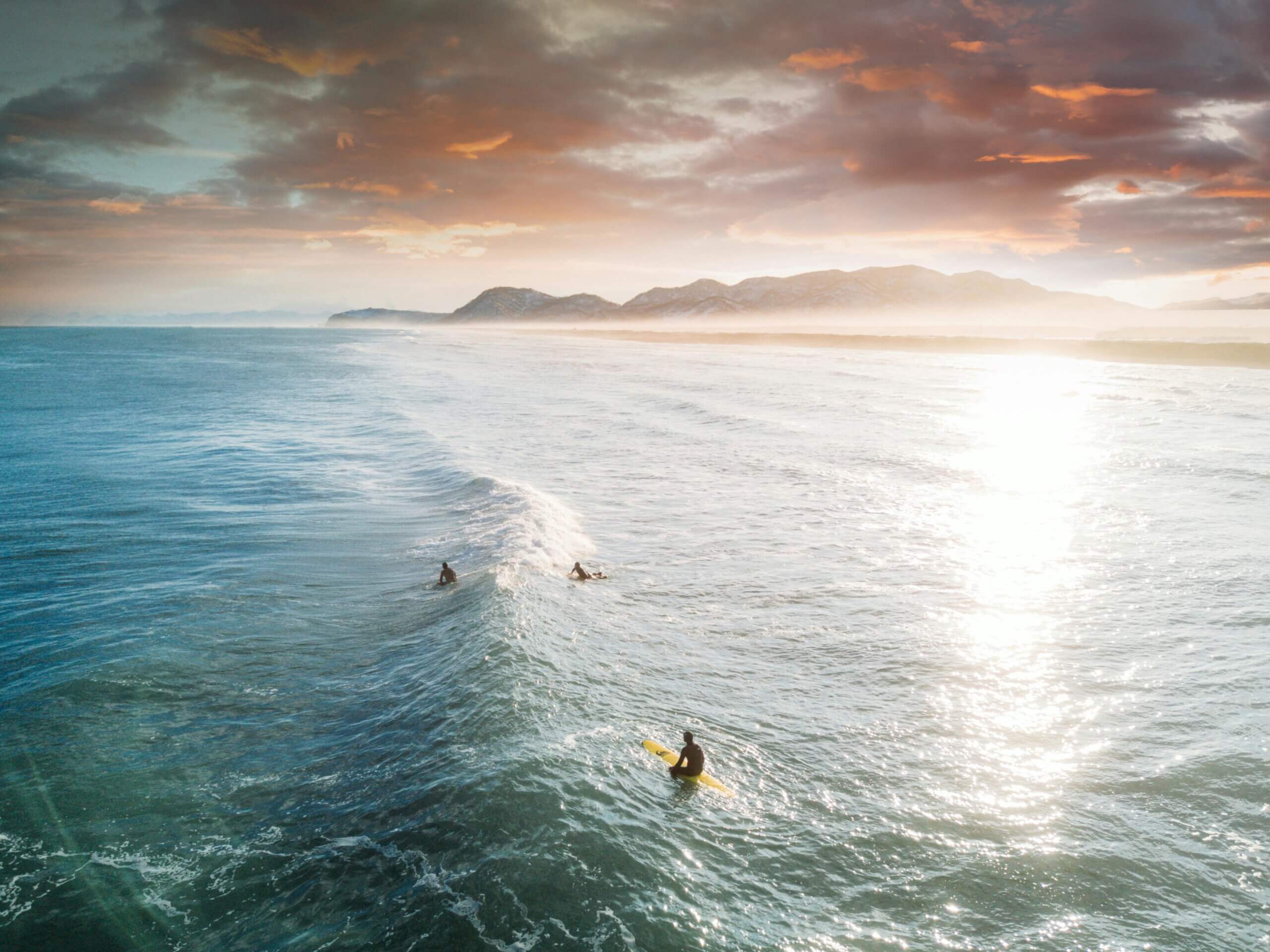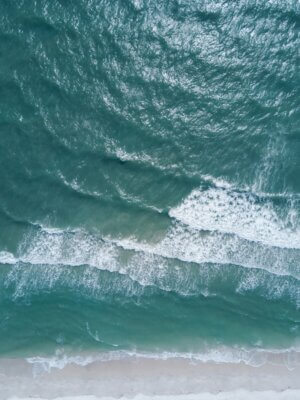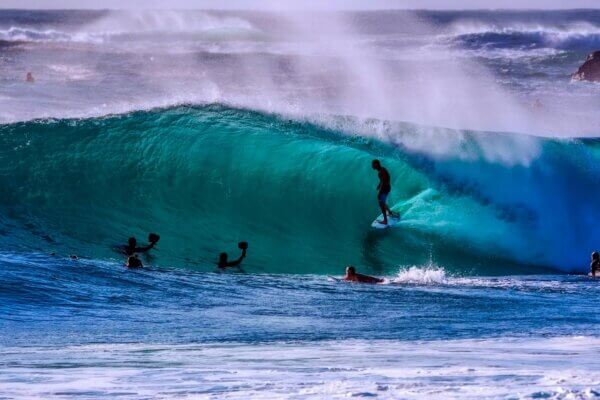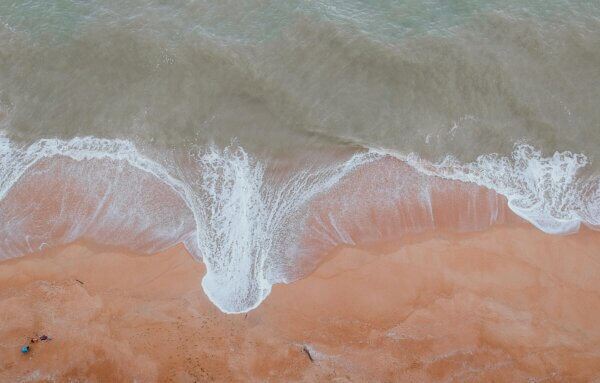
28 Jun Why Your Surf Forecast Is Lying to You: A Deep Dive Into Wave Height
You’re sipping your morning coffee, scrolling Surfline like it’s your ex’s IG, and BAM, the forecast says “3–4 ft, clean conditions.” You do a little dance. You stretch. You wax your board with the confidence of Poseidon’s favorite child.
But when you paddle out…
THERE. ARE. WALLS.
Towering saltwater skyscrapers rising like Poseidon himself got bored and decided to throw tantrums.
You bail.
You cry.
You rethink every decision that led you here.
“Wait,” you whisper into your leash, “I thought it was just 3 feet?”
That, my dear salty soul, is the exact moment you realized:
WAVE HEIGHT MEASUREMENTS ARE PREPOSTEROUS.
Let’s unpack this nonsense, with a grain of salt… and a waterproof helmet.

Two Ways to Measure a Wave — Both Mildly Delusional
1. Wave Face Height (aka “What You Actually See”)
This is what normal people use. Also known as Surfline, surf coaches, and people who want you to live.
This measures the wave from the bottom of the trough to the tippy-top of the crest — aka the part that actively tries to murder you.
- A “6-foot” wave face = genuinely overhead
- A “3-foot” wave = probably waist-to-head high depending on tide, wind, and whether or not you peed your surfsuit
It’s what your eyes, knees, and sphincter experience. It’s honest. It’s direct. It’s like the cool friend who says, “Yeah, that dude’s trash, don’t text him back.”
2. Hawaiian Scale (aka “Lies From the Back”)
Now this — this is some next-level humblebragging witchcraft.
The Hawaiian Scale measures the back of the wave. The part that’s all chill, round, and soft-spoken.
Not the front face, where the wave becomes a roaring, frothy wall of saltwater vengeance. No, no.
- A “3-foot Hawaiian” = a solid overhead monster that will casually rearrange your spine if you’re not ready.
- A “6-foot Hawaiian” = death, taxes, and reef tattoos.
This scale is basically your friend who says, “I only had one glass of wine,” while casually setting fire to the karaoke machine.

Why Are They So Different?
Because waves aren’t IKEA shelves.
They don’t come with rulers or instruction manuals.
Measuring waves is part science, part dark art, and part surfer ego.
People see different things depending on:
- Their perspective (beach vs. channel vs. inside their own panic)
- Their ego (nobody wants to admit they got worked by a “3-footer”)
- Their trauma (every wipeout adds 2 ft in the retelling)
Even cameras lie, especially when the swell is juicy and you’re clinging to your board like a lost toddler in a tsunami.
But Hey, What Does “3 ft” Actually Mean Then?!
Glad you asked, imaginary reader who respects my pain.
Here’s a comparison table for all your forecasting frustrations:
| What it says | What it means (face height) | How it feels emotionally |
|---|---|---|
| 2 ft Hawaiian | 5–6 ft face | “Okay, I can do this… wait… no I can’t” |
| 3–4 ft Surfline | Shoulder to head high | “Fun… but make peace with your ancestors” |
| 6 ft Hawaiian | Double overhead | “Roaring Towering Behemoths” |
| 1 ft | Ankle snappers or 8-foot bombs (welcome to Indonesia, baby) | “Surprise! The ocean is chaotic neutral.” |

Pro Tip: Trust No Forecast. Only Your Eyeballs.
If you really want to know how big it is:
Go down to the beach.
Find a surfer.
Observe their facial expression.
If they look stoked = probably fun.
If they look haunted = definitely overhead.
If they look like they’re crying = turn around, get coffee, and live to surf another day.
Closing Thoughts from a Wave-Wrecked Human
Whether you’re riding peeling beauties or getting absolutely humbled by a “playful 4-foot swell,” remember:
Wave size is a relative, wavy, bendy truth.
It’s like asking “How spicy is this sambal?”
There’s no objective answer — only sweat, tears, and whether your soul briefly leaves your body.
So next time Surfline whispers “3 ft, clean,”
just laugh, wax up, and say:
“Sure, buddy. Let’s see what Poseidon has planned.”
See you in the whitewash or at Wave House Surf Camp, baby.
✌️



